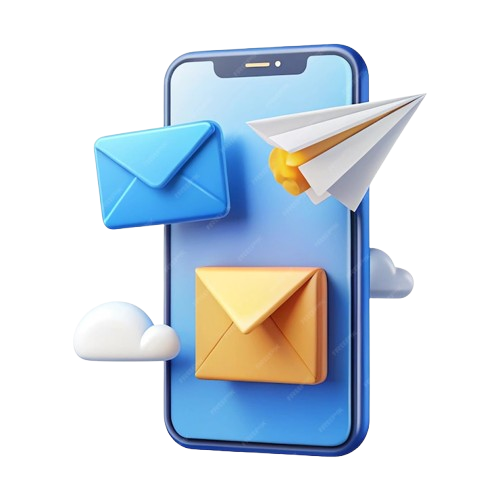Once you’ve set up your WhatsApp Business Profile and added your contact details, description, and business hours, you can start interacting with your customers. Here are some more specific steps you can take to get the most out of your WhatsApp business account and make it a powerful customer service channel:
Let customers know you’re available on WhatsApp
Customer service via WhatsApp. Firstly, it makes sense to inform your customers that you’ve added WhatsApp as another customer service channel. There are a couple of ways to go about that. To start off, add a WhatsApp widget or icon on your website, allowing your customers to message you directly while navigating through your pages. You can also mention that you’re now available on WhatsApp in one of your newsletters or even add a WhatsApp link to your email signature. Another effective way to promote WhatsApp as your new customer service channel is to add a QR code to your marketing materials.
Create quick replies to speed up your responses
Using the quick replies feature, you can create a helpful repository of pre-set responses to answer repetitive questions. When interacting with customers, your reps can easily send pre-set responses in a single tap instead of having to type Argentina Email List 4.8 Million Contact Leads answers manually each and every time. That can save your team a considerable amount of time while also enabling them to maintain consistent messaging. What’s more, quick replies can help you reduce the average handle times, contributing to improved customer satisfaction.
Set clear response time expectations
According to Salesforce, 83% of consumers want to interact with someone immediately when they contact a company. When it comes to responding to customer service messages on WhatsApp or SMS, in particular, customers typically have high expectations for service speed and availability. But even if your team can’t answer customer messages instantly, you can still effectively manage customers’ expectations by setting up an automated greeting message that they will receive when they contact you outside business hours, letting them know when they can expect to hear back from you.
Use labels to keep your conversations organized
Using WhatsApp for customer service
WhatsApp labels are a powerful feature to help you keep your WhatsApp conversations organized and manage them more effectively. For example, you can create custom color-coded labels like “High Priority”, “General Inquiry”, “Technical Issues”, “Payments”, etc. and tag your incoming conversations accordingly for better clarity and visibility. Overall, WhatsApp allows you to create up to 20 customized labels. What’s even better, with WhatsApp Business API, you can label conversations automatically based on content or pre-defined triggers. That helps you ensure your incoming conversations are accurately sorted as soon as you receive them.
Integrate a chatbot to answer common customer inquiries
As we’ve already mentioned earlier, one of the benefits of using WhatsApp as a customer support channel is the ability to integrate it with chatbots to answer the most common questions. According to stats published by Outgrow, 74% of customers would choose a chatbot over a human agent to look for answers to simple questions. And what’s more, if offered an alternative to wait 15 minutes to get a response, 62% of consumers would rather talk to a chatbot than a human service rep.
It’s important to note though that WhatsApp itself doesn’t offer a built-in, out-of-the-box chatbot feature. You can integrate chatbots through third-party platforms or use the WhatsApp Business API to build customized automated solutions.
If implemented and trained right, chatbots can answer simple questions, provide customers with the required information, direct them to helpful self-service resources like FAQs, enable them to book appointments, or even help complete basic transactions that don’t require human-assisted support. Most importantly, with an integrated chatbot, you can scale your operations and provide customer support during off-hours like weekends and holidays. The outcome – fewer customer service requests for your team to handle, allowing them to focus more on higher-value tasks.
It’s worth mentioning that chatbots aren’t meant to solve every support request and replace your CX team. When customers are faced with more complex issues or in situations that require a human touch like complaints or disputes, you’ll want to be sure your WhatsApp chatbot can seamlessly escalate the conversation to a human rep. According to HubSpot’s stats, 62% of consumers prefer speaking with a human representative over a chatbot when they have complicated issues.Send proactive notifications with WhatsApp templates
WhatsApp customer support
Beyond simply responding to incoming customer service requests, WhatsApp is a great tool you can use for proactive customer service. Using pre-approved WhatsApp message templates, you can send proactive notifications to customers and prospects who have previously opted-in to receive messages from you and deliver important information even before they reach out to you. For example, with automated proactive messages, you can:




